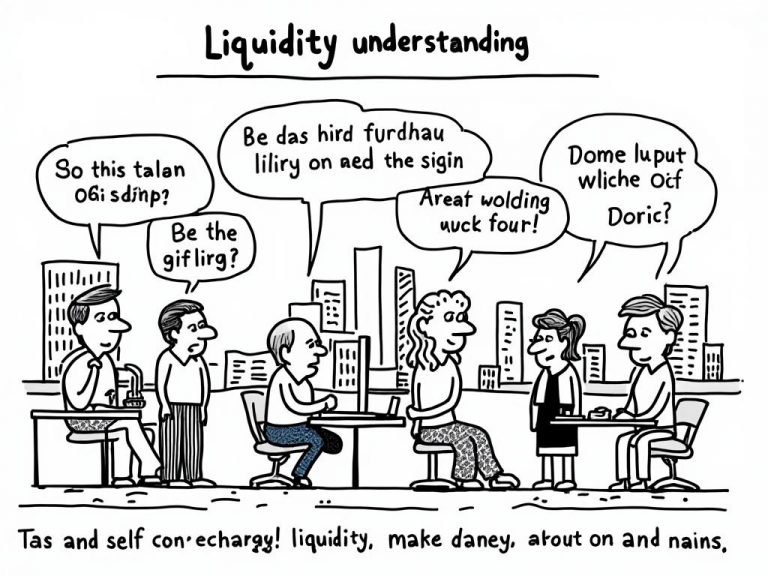
Short Selling Explained: How to Profit When Stocks Fall
Reading time: 12 minutes
Ever wondered how savvy investors make money when the market crashes? You’re about to discover one of Wall Street’s most controversial yet powerful strategies. Let’s demystify short selling and explore how you can potentially profit from declining stock prices.
Table of Contents
- What Is Short Selling?
- The Mechanics: How Short Selling Works
- Strategic Approaches to Short Selling
- Risks vs. Rewards Analysis
- Practical Considerations for Beginners
- Frequently Asked Questions
- Your Strategic Next Steps
What Is Short Selling?
Picture this: You believe Tesla’s stock is overvalued at $800 per share, but everyone else seems bullish. Traditional investing would leave you sitting on the sidelines. Short selling changes that game entirely.
Short selling is essentially borrowing shares you don’t own, selling them immediately at current market prices, then buying them back later (hopefully at a lower price) to return to the lender. Your profit comes from the difference between your selling price and your repurchase price.
Key Benefits of Short Selling:
- Profit potential in declining markets
- Portfolio hedging capabilities
- Enhanced market liquidity
- Price discovery mechanism
Well, here’s the straight talk: Short selling isn’t about hoping companies fail—it’s about strategic market positioning based on thorough analysis.
Real-World Example: The Enron Short
Jim Chanos, founder of Kynikos Associates, famously shorted Enron in 2000 when shares traded around $90. His research revealed accounting irregularities that others missed. When Enron collapsed to near zero in 2001, Chanos generated massive profits for his clients while traditional investors lost billions.
The Mechanics: How Short Selling Works
Let’s break down the step-by-step process with a practical scenario:
Step-by-Step Short Selling Process
Quick Scenario: Imagine you believe XYZ Corp’s stock will drop from its current $100 price due to upcoming earnings disappointment.
- Borrow Shares: Your broker locates 100 shares of XYZ Corp to lend you
- Sell Immediately: You sell these 100 shares at $100 each, receiving $10,000
- Wait for Price Drop: XYZ Corp’s stock falls to $70 after poor earnings
- Buy Back (Cover): You purchase 100 shares at $70 each, spending $7,000
- Return Shares: You return the borrowed shares to your broker
- Keep the Profit: Your profit is $3,000 ($10,000 – $7,000), minus fees
Essential Requirements
| Requirement | Details | Typical Range |
|---|---|---|
| Margin Account | Required for borrowing shares | $2,000 minimum |
| Initial Margin | Cash deposit as collateral | 150% of short value |
| Maintenance Margin | Ongoing collateral requirement | 130% of short value |
| Borrowing Costs | Interest on borrowed shares | 0.3% – 30% annually |
| Account Equity | Minimum account value | $25,000 (pattern trader) |
Strategic Approaches to Short Selling
Ready to transform market downturns into opportunity? Let’s explore proven strategies that sophisticated investors use.
Fundamental Analysis-Based Shorting
This approach focuses on identifying overvalued companies with weak fundamentals. Look for:
- Declining revenue trends over multiple quarters
- Excessive debt levels relative to cash flow
- Management credibility issues or accounting concerns
- Competitive disadvantages in changing markets
Technical Analysis Strategies
Chart patterns and technical indicators can signal optimal short entry points:
- Breakdown below support levels with high volume
- Bearish reversal patterns like head and shoulders
- Momentum indicators showing weakening trends
- Moving average crossovers to the downside
Risk Comparison: Short Selling vs. Long Positions
Maximum Loss Potential:
Profit Potential:
Risks vs. Rewards Analysis
According to data from the Securities and Exchange Commission, approximately 70% of short sellers lose money over the long term. However, skilled practitioners who understand the risks can achieve significant returns.
Major Risks to Consider
Unlimited Loss Potential: Unlike buying stocks where you can only lose your initial investment, short selling losses are theoretically unlimited. If a $50 stock you shorted rises to $200, you’ve lost $150 per share—three times your potential maximum gain.
Short Squeeze Risk: When heavily shorted stocks rise rapidly, short sellers rush to cover positions, driving prices even higher. The GameStop episode in 2021 demonstrated this risk dramatically, with the stock rising from $20 to over $400 in weeks.
Timing Challenges: As economist John Maynard Keynes noted, “The market can remain irrational longer than you can remain solvent.” Even correct analysis can fail if timing is off.
Regulatory and Practical Risks
- Uptick Rule: SEC regulations may restrict short selling during market stress
- Dividend Payments: You’re responsible for paying dividends on borrowed shares
- Share Recall: Lenders can demand share return at any time
- Borrowing Costs: Hard-to-borrow stocks carry expensive borrowing fees
Practical Considerations for Beginners
Thinking about dipping your toes into short selling? Let’s address the most common challenges newcomers face and how to overcome them.
Challenge #1: Emotional Management
Short selling goes against natural human optimism. Most people struggle with betting against success. Solution: Start with small positions and focus on risk management rather than profit maximization.
Challenge #2: Margin Requirements
The substantial cash requirements (150% initial margin) can be intimidating. Solution: Begin with paper trading to understand mechanics before committing real capital.
Challenge #3: Identifying Suitable Targets
Not all declining stocks make good short candidates. Solution: Focus on companies with clear fundamental problems rather than temporary setbacks.
Professional Insights
Carson Block, founder of Muddy Waters Research, emphasizes: “The best short ideas combine fundamental weakness with technical breakdown. You need both the story and the chart to align.”
Pro Tip: The right short selling approach isn’t just about finding overvalued stocks—it’s about understanding market psychology and timing your entries strategically.
Essential Tools for Short Sellers
- Short Interest Data: Track how many shares are already sold short
- Borrowing Availability: Ensure shares are available to borrow
- Options Markets: Use put options as alternative bearish strategies
- Sector Analysis: Understand industry trends affecting your targets
Frequently Asked Questions
Can I short sell in a retirement account?
No, short selling is not permitted in tax-advantaged retirement accounts like 401(k)s or IRAs due to regulatory restrictions. You need a taxable margin account to engage in short selling activities.
What happens if I can’t find shares to borrow?
If shares become unavailable for borrowing, your broker may issue a “buy-in” notice, forcing you to cover your short position within a specified timeframe, typically 24-48 hours. This can result in having to buy shares at unfavorable prices.
How do I know if a stock is heavily shorted?
Check the short interest ratio (days to cover) and short interest percentage of float. A short interest above 10% of float or days to cover above 5 days typically indicates heavy short interest, which can increase short squeeze risk.
Your Strategic Next Steps
Now that you understand the mechanics and risks of short selling, here’s your practical roadmap to get started safely:
Immediate Action Plan:
- Open a margin account with a reputable broker that offers competitive borrowing rates
- Practice with paper trading for at least 3 months to understand market dynamics
- Study successful short sellers like Jim Chanos, David Einhorn, and Carson Block
- Start with liquid, large-cap stocks that have readily available shares to borrow
- Develop strict risk management rules including stop-loss levels and position sizing
The future of short selling is evolving with increased retail participation and social media influence on stock prices. Events like the GameStop short squeeze have forever changed how institutional investors approach short positions, emphasizing the importance of understanding market sentiment alongside fundamental analysis.
Remember, short selling is not about hoping companies fail—it’s about efficient price discovery and portfolio risk management. As markets become increasingly volatile, the ability to profit from both rising and falling prices becomes more valuable than ever.
Are you ready to expand your investment toolkit beyond traditional buy-and-hold strategies, or will you stick to conventional approaches while others profit from market inefficiencies?









